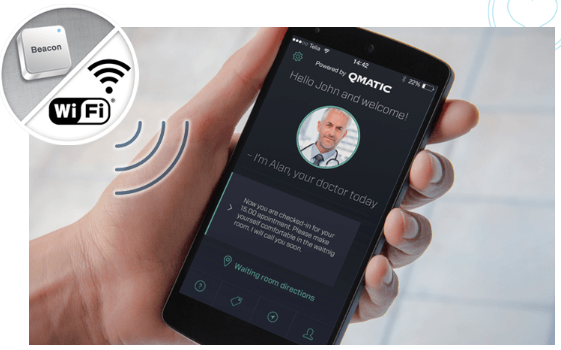- Blog Overview
- Knowledge
- 84% of leaders rank patient experience as a top priority – Here are top tips on how to deliver

84% of leaders rank patient experience as a top priority – Here are top tips on how to deliver
Sven-Olof Husmark |May 5 2014 | 6 min
Healthcare facilities of all types are under enormous pressure to provide an improved quality of care to more patients while coping with limited available resources. For hospitals in particular, public and private, this often means a stressful experience for patients and staff alike. According to Care Transition Journal 84% of healthcare leaders rank Patient Experience as a top priority.
Patient Experience has thus become a top priority for hospital leaders and in many countries payments to healthcare providers are partially influenced by how well the provider ranks in customer surveys. In the US as an example, the Hospital Consumer Assessment of Healthcare Providers and Systems (HCAHPS) survey scores is tied to part of Medicare’s incentive payments to hospitals and health systems.
People come to a healthcare facility for a reason. They have a medical problem or concern. They are worried, stressed, perhaps even in pain. Perhaps they have taken time off from work to see a clinician or have children at home to take care for. The fact is that although every patient is different, with different healthcare needs, they are all people. For them, the patient experience does not start when they see the clinician, but rather from the moment they enter the facility – or even before. The challenge is to make their entire visit as smooth, comfortable and respectful as possible.
Here are 6 top tips on what you can do to improve the situation.
Reduce actual waiting time
Waiting to see a nurse or doctor can be stressful. The wait seems endless. A patient can feel frustrated and neglected. Finding ways to reduce waiting time goes hand in hand with an enhanced customer experience. The target is to make the patient experience as pleasant and efficient as possible.
Reduced perceived waiting time
The longest wait is the one you cannot control – especially as a patient. While actual waiting times are important, so too are perceived waiting times. A system using media displays can reduce the perceived waiting time in the waiting area to present hospital information and entertainment. This transforms passive waiting into active waiting or relevant distraction – for a more positive and enlightening patient experience.
Reduce stress, enhance privacy
A calm, fair and orderly waiting environment is perhaps not typical in a hectic healthcare setting, but it can with a well implemented Patient Experience Management solution. For example, you can implement virtual queuing, which removes the need for a physical waiting line. Instead, the patient’s place in the virtual queue is secured with an identifier, such as a number printed on a patient service receipt or sent to their phone as a text message. From my experience, this solution makes patients feel more comfortable and secure.
Virtual queuing can also fulfill patients’ privacy requirements by identifying patients as soon as they enter the waiting area, giving them a unique identity number that allows clinicians to call patients by ticket number instead of by name. When applied correctly, virtual queuing is both fair and welcoming. Patient can relax in a comfortable waiting area, read magazines or have a cup of tea. With a mobile solution they can even wait outside the hospital.
Provide in-process reassurance
Waiting and wondering is never a good combination. Healthcare providers should provide reassurance by guiding and updating patients about where to go, where to wait and expected waiting times. For example, text messaging solutions and smartphone apps can be used to provide queue information.
Improve the quality of service
When it comes to quality of service, there is always room for improvement. It is a continuous effort based on learning about the actual waiting experience. Applying a systematic approach to patient flow can help drive patient service improvement activities. A patient survey model, for example, makes it possible to gain insight on the services experienced by polling patients.
Increase staff satisfaction
Attracting and keeping qualified employees is vital for any healthcare facility. The challenge is to provide a positive, stimulating and orderly work environment. With systems that increase staff job satisfaction by streamlining the patient flow and making it more efficient makes sure that the right patient is at the right place at the right time. This contributes to a more comfortable and relaxed workplace. Satisfied patients are usually friendlier toward clinicians, contributing to a more positive workday. It becomes a positive spiral.
Do you want to find out more about the challenges being faced throughout the healthcare industry and how to overcome them?









